Welcome to Labkafe ~ Orientallabs Retail Services Private Limited
To know how to operate a thing, you need to intimately know the various operable parts of that thing. So, here are the standard compound microscope parts; we advise you to read this carefully and understand.
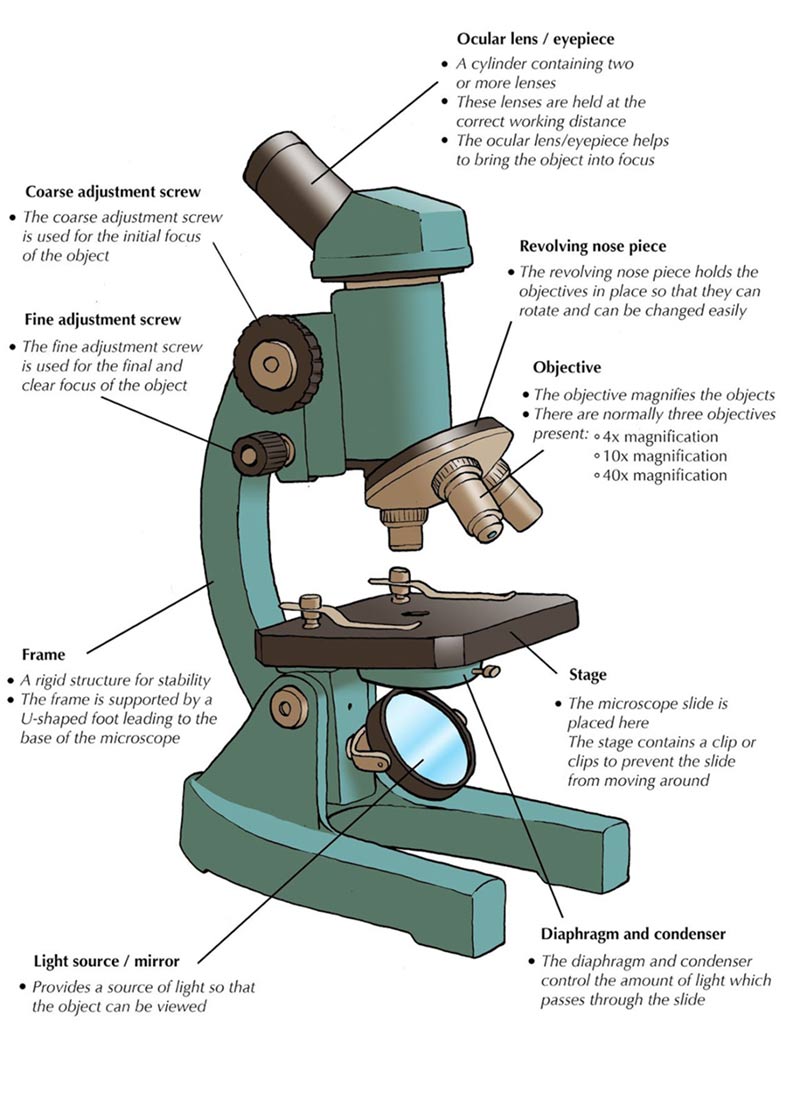
These parts are what hold up everything else of a device. They are the only sturdy parts of it, able to withstand some force. They do not move around (much) and are meant to stay solid and dependable.
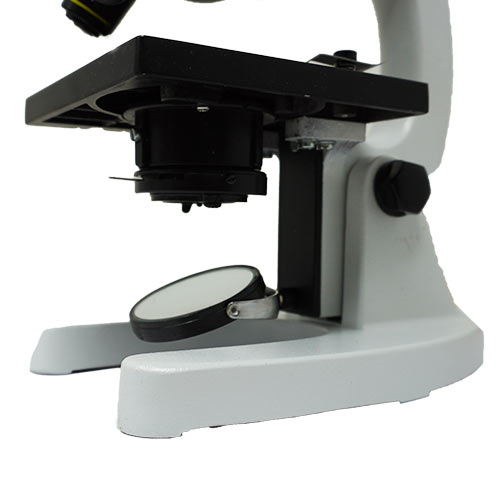 | Base or Foot: Holding up the entire microscope on top, this U-shaped part is at the very bottom of the ‘scope. Since it is meant to stabilize the whole system, the base of a microscope is often made of solid metal and is very heavy. There are no knobs or other controls here; let’s move on. |
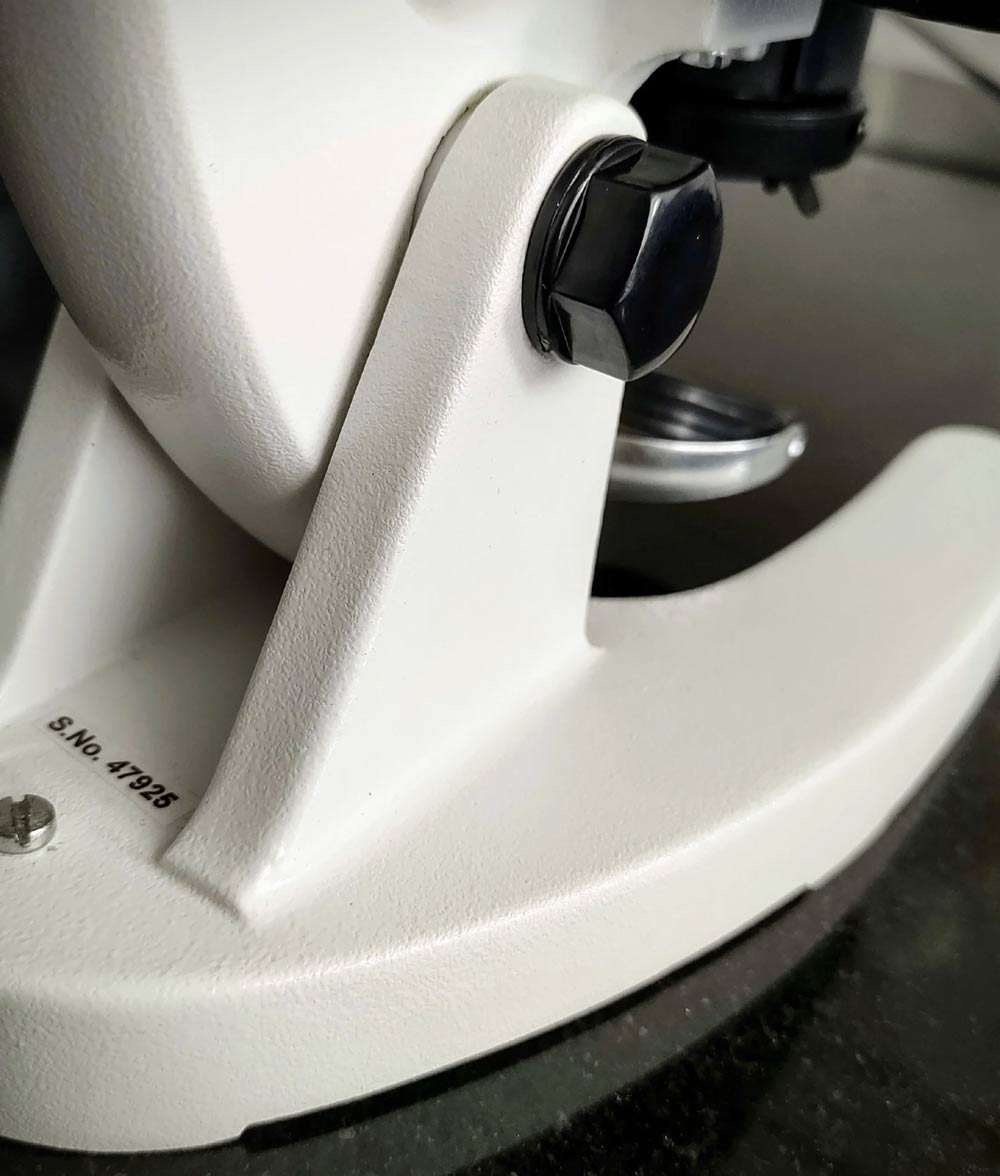 | Piller: In some microscopes, there is a small vertical part that projects out of the flat base. This connects the arm of the microphone to the base and generally has a sturdy screw or joint called the Inclination Joint, on which the part above can tilt. |
 | Arm: This is one of the most iconic parts of a microscope. All other optical and mechanical parts of the ‘scope are mounted on this. The arm is basically a strong thick bar of metal, often vaguely C-shaped. The microscope is held and lifted by grabbing the arm strongly. |
 | Body: Attached to the top edge of the arm, the body is a hollow tube that holds up all the optical parts of the microscope. All the lenses depend on this for stability. It has knobs attached to it that can move the lenses up and down. Note: When you lift a microscope, make sure you grab it by the arm as well as place a hand under the base. |
The microscope needs a lot of adjustment to bring an object into a clear view. For this reason, it has a lot of moving parts; and these parts fall into this category.
| Stage: This is the rectangular solid part on which the specimen slide is placed. It is connected solidly to the lower side of the arm, and can move in both x and y directions. It has a hole in the center called ‘Aperture’, which lets light pass through from below to hit the slide to brighten up the sample. |
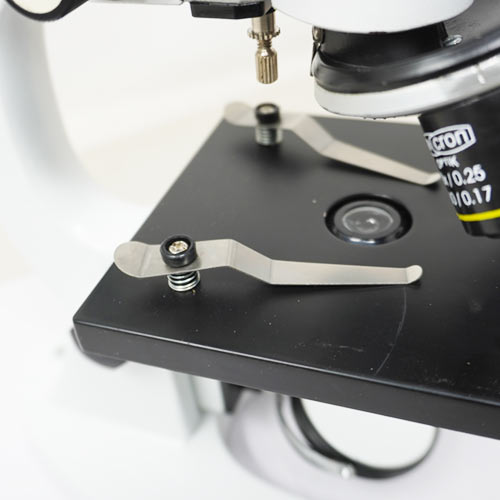 | Clips: The stage has two large clips which you can use to securely hold the slide in place so that it doesn’t accidentally move. The screws on top of the clips can tighten or loosen, changing the strength of the clips. |
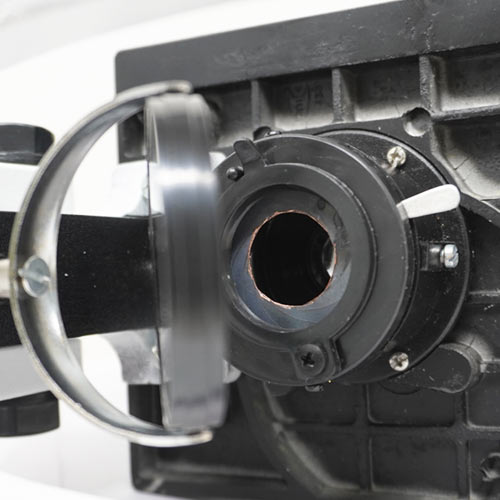 | Diaphragm: It is necessary to have control over how much light is passed through the aperture, or else either your eyes may get damaged or you won’t see anything. Hanging below the stage, the diaphragm does exactly this. Most probably you’ll find an ‘iris’ type diaphragm, but there are ‘disc’ types also. There will be some kind of control beside it to adjust the light. |
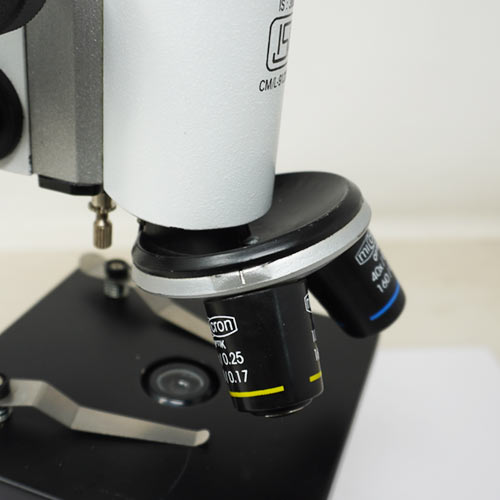 | Nose Piece: Hanging from the lower end of the body tube, there is a circular rotating platform that can hold different kinds of objective lenses. You can change the magnification level on the fly by rotating this and bringing different lenses into play. |
 | Adjustment Knobs: We’ve already mentioned them before, as two knobs on the side of the body tube. They are perhaps the most used parts of a microscope; as you are observing something in a ‘scope, chances are your fingers will be on one of them most of the time. They move the lens assembly up and down. The bigger knob, called the ‘Coarse Adjustment’, moves the lenses a lot, allowing you to get closer to the desired level quickly. The smaller, ‘Fine Adjustment’ knob does a similar job but does it much, much slowly and finely so that you can fine-tune your focus. |
These are the parts that create the image of the specimen that you will see at the end. They are the most delicate parts of a microscope and on no account should you ever touch them with your bare hands, or, god forbid, put any kind of force on them.
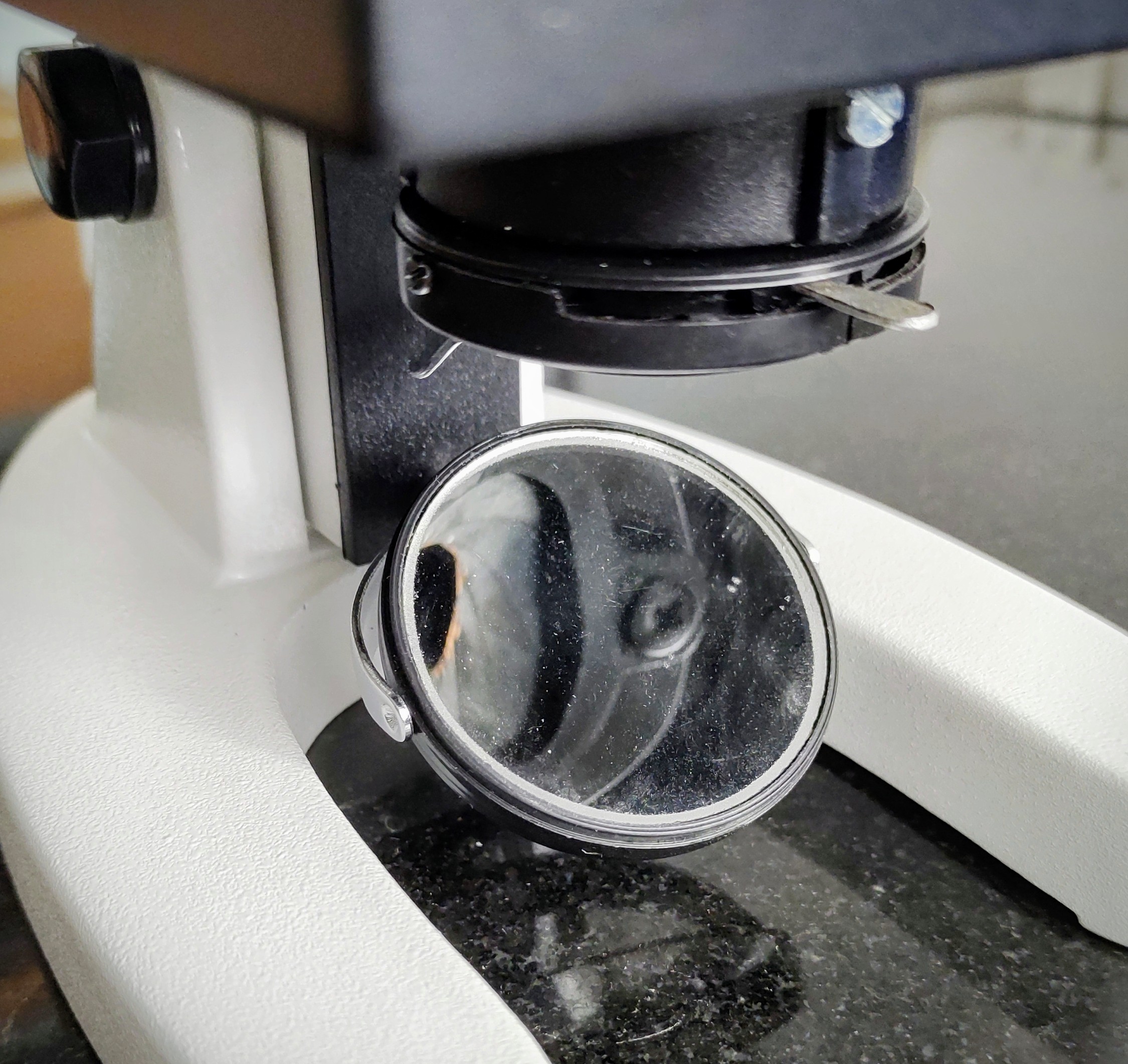 | Illuminator: This is the source of the light placed below the stage, which lights up the sample. In your microscope, it is probably a round mirror, that you can tilt in any direction and catch a ray of light and focus it through the aperture. More modern electric microscopes use some kind of light instead. If they do, there will be an off/on switch and probably an intensity regulator too. |
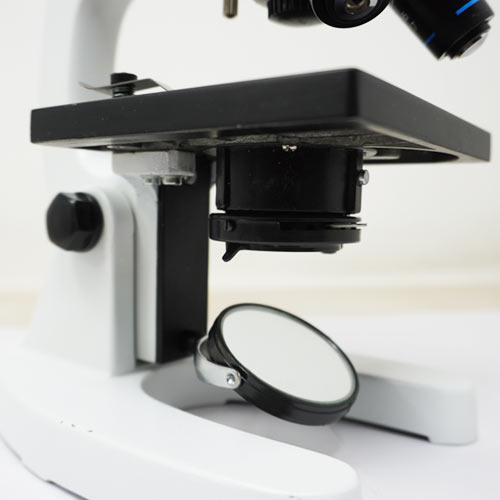 | Condenser: This is just a broad lens right under the diaphragm that focuses the light coming from the mirror (or bulb) and focuses it sharply right through the narrow hole of the aperture. Some older models may not have this. |
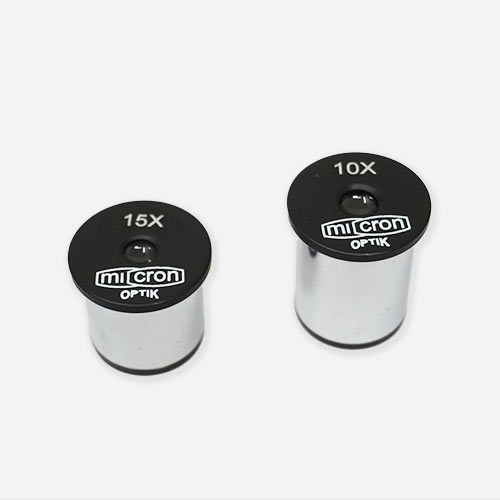 | Ocular or Eyepiece: This is the lens at the very top of the microscope, through which you look inside. As you can guess, since it stays the closest to your eye, it is called the eyepiece or ocular. Generally, this lens is of 10x power. But you can replace it with 5x or 15x pieces as you wish ‒ the eyepiece assembly just sits loosely on top of the body and can be just lifted out and swapped as necessary. |
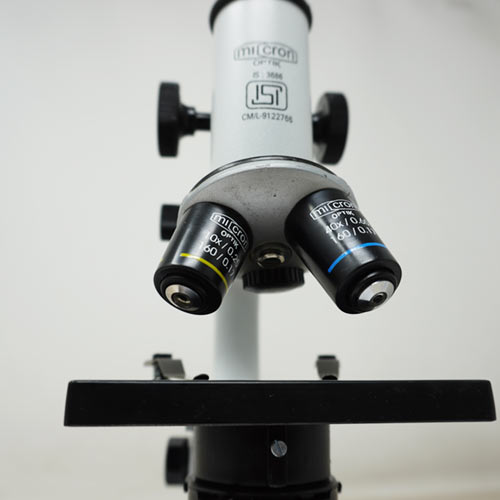 | Objectives: The most important and vital part, the main lens assembly, without which a microscope cannot function in any way. They hang from the nosepiece (often 2-3 are used together) and almost touch the sample slide. They can range wildly in power ‒ we’ve seen 4x to 100x. Or more in the case of advanced microscopes. Generally in schools and colleges, you will find 5x, 10x, and 45x objectives being used in biology or physics labs. |
There you go, now you know everything that makes up a microscope. Read more:
If you have liked our explanation, please like and share it on your favorite social media! Remember, spreading knowledge only increases it.
Labkafe is among the most promising laboratory supplies vendors in India. We manufacture and supply lab equipment, lab furniture, lab consumables, lab glassware, lab machines and more! Not only we manufacture lab items, we export to international resellers too. We fulfill CBSE ICSE ISC IGCSE IB State board affiliation requirements for schools by providing affiliation packages to schools. Our featured products are:
Chosen by over 1200 schools, colleges, universities, research labs, government agencies and private companies to build or renovate their laboratories, Labkafe stands as your best friend when it comes to labs. We are also a registered OEM on GeM. Our clients love us because we provide the best quality of lab products, free demos, free installation, and support for ever.
Do you wish to experience excellence too? Why not contact us today at [email protected], or call 9147163562 directly ‒ we are always available to serve. You can also use the chat button in the corner to connect to one of our representatives instantly!
Jun 09, 2022 by Swarna Karmakar
Jun 03, 2022 by Swarna Karmakar